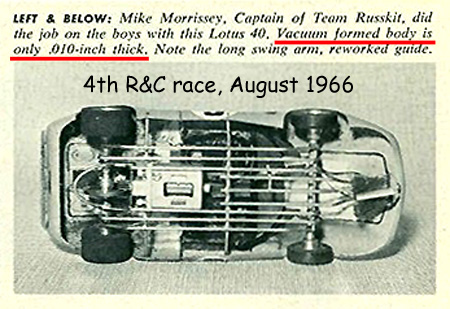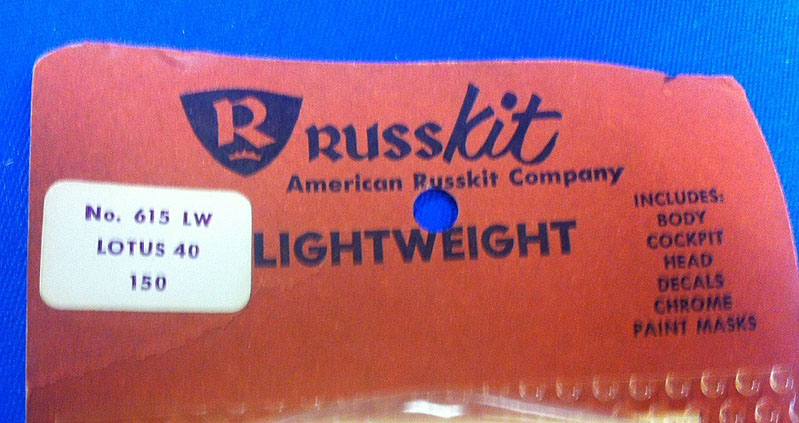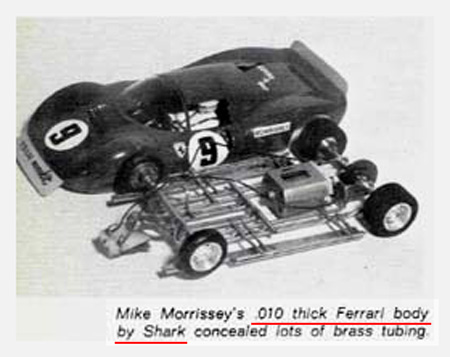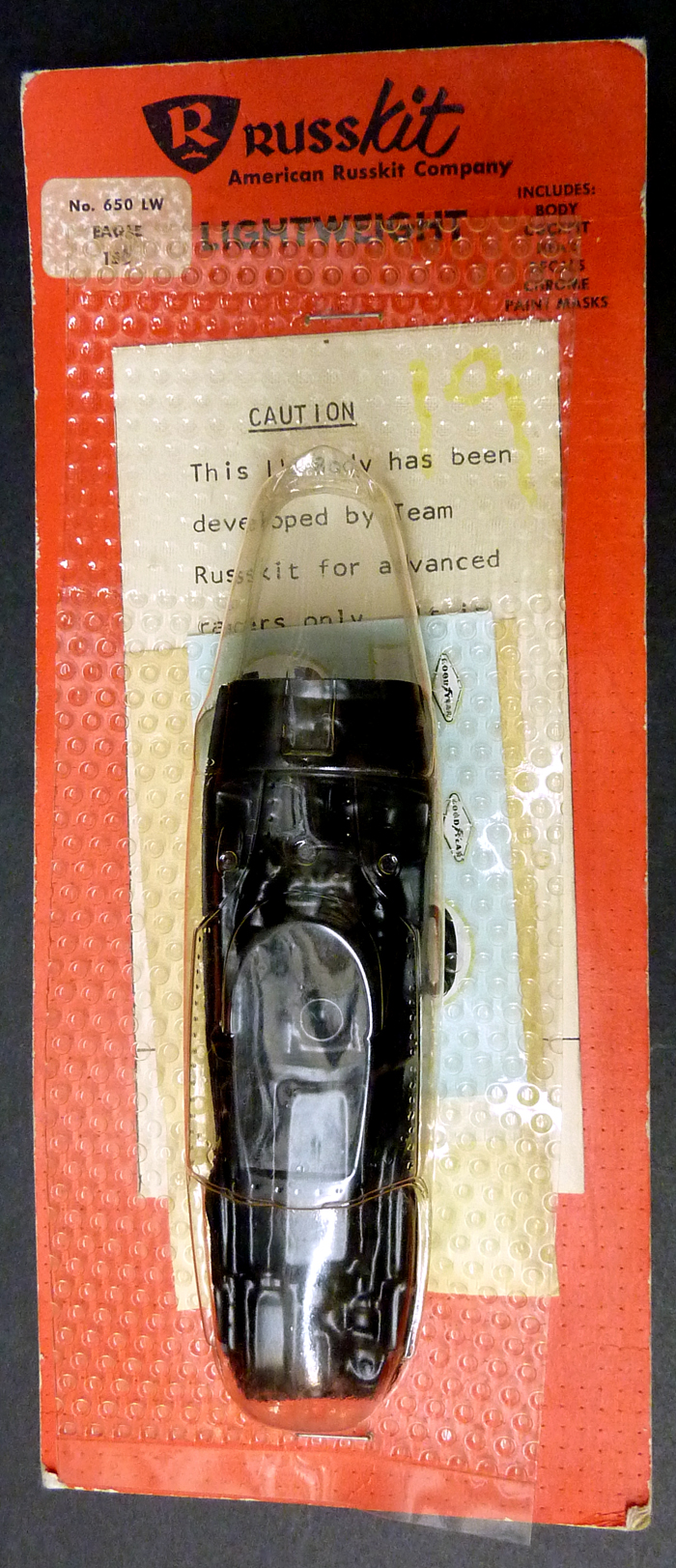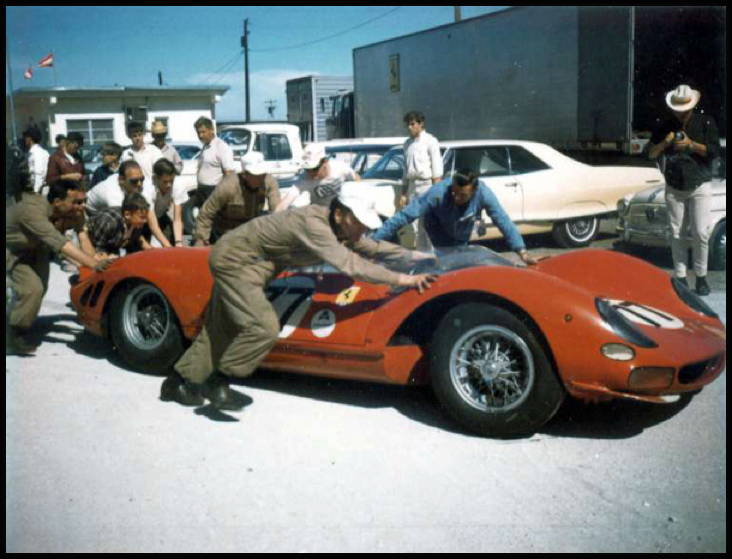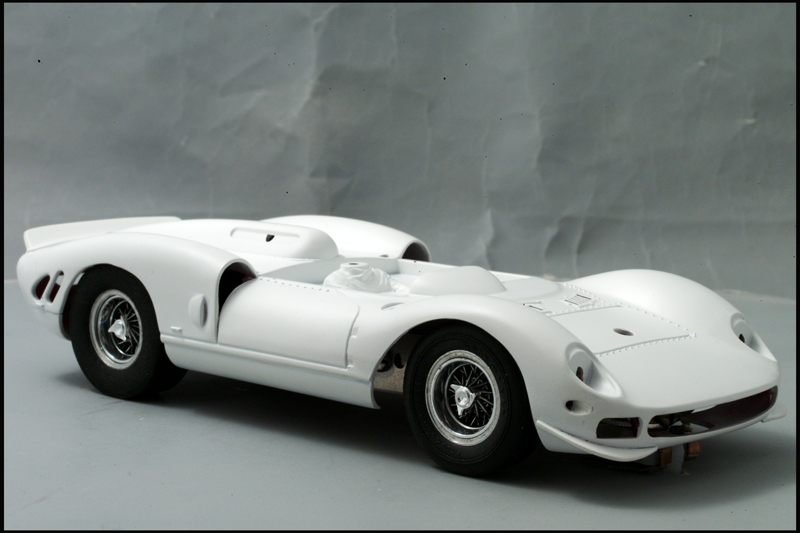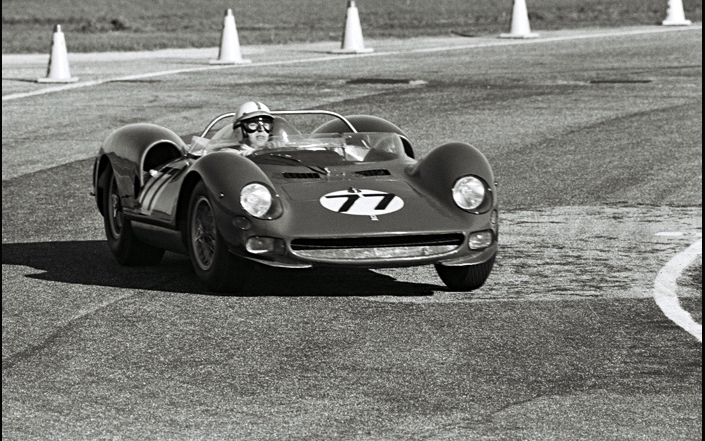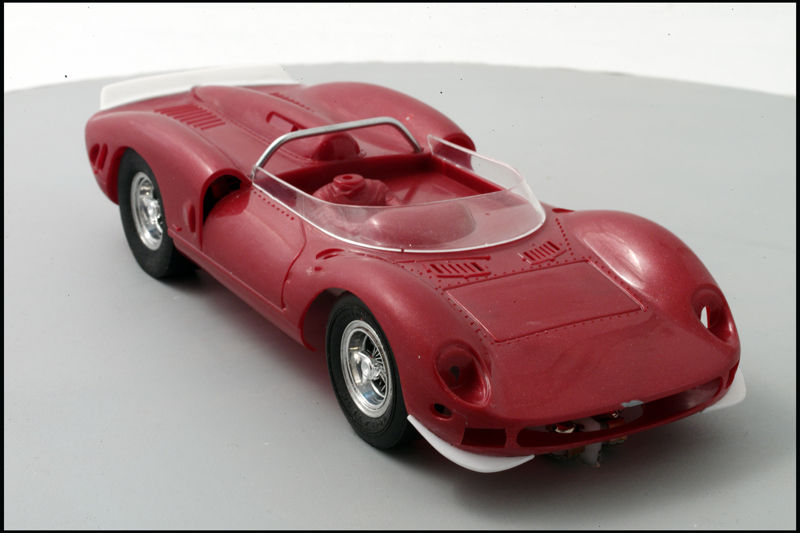Time to set up the jig so I can actually build something.
It's always best to start with the body you're going to use. In this build the body is a Ferrari 330-P2:
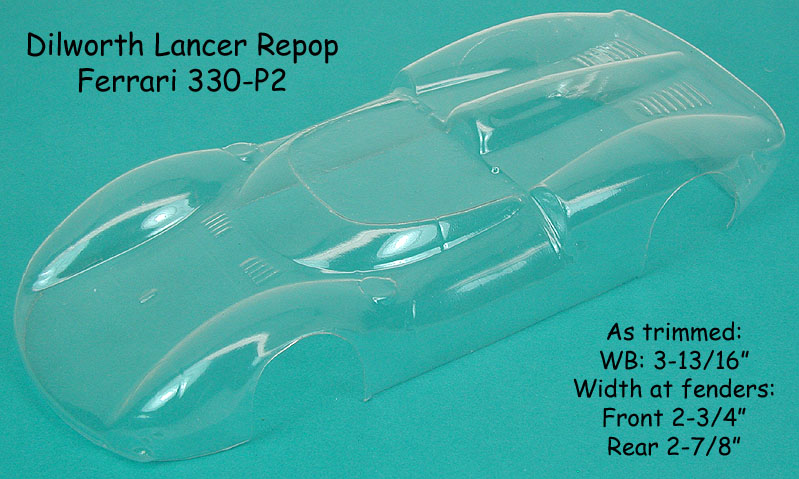
When trimming the body, I noticed that the mold lines defined a wheelbase on one side was slightly different than the wheelbase on the other. No big deal, I'll just trim until they are equal, keeping the wheel arches directly across from each other.
But what is the "correct" scale wheelbase for a Ferrari 330-P2? Doing my homework, I see it is 2400mm or 94.5". Dividing by 24 gives me 3.9375" or 3-15/16". Now, we have a bit of a problem.
There is NO WAY I am going to cut the body to a 3-15/16" wheelbase; it would look terrible! What's more, checking the published R&C rules:

I see that strict conformance to the rules will require the car's wheelbase to be within 1/16" of scale; which in this case would be a maximum of 4" and a minimum of 3-7/8".
So, first I cannot make it "scale", and then I cannot even make it conform to the R&C rules. Stuck? No. Here we properly apply the concept of "precedence".
When a project needs to get designed and built, but rules and specifications conflict, the issue is resolved by determining the precedence of the conflicting rules and specifications. Generally speaking, newer takes precedence over older.
My number one rule is that I'm going to have some fun building and not stress-out over this. The fact is most 1966 sports car wheelbases are between 90" (3-3/4" scale) and 96" (4" scale) anyway; I'm in the ballpark.
So, I will set-up the jig for a wheelbase of 3-13/16" to match the body I'm using.
The trimmed body's width across the front fenders is 2-3/4". Across the rear fenders is 2-7/8". R&C rules allow 3". I can go any one of three ways:
1. Build the chassis so the rear tires are 2-7/8" across the outside edges to match the body.
2. Flare the fenders out to 3" and build the chassis to 3".
3. Invoke the obscure R&C rule that actually allows the rear tires to "stick out" 1/16" beyond the rear fenders on each side.
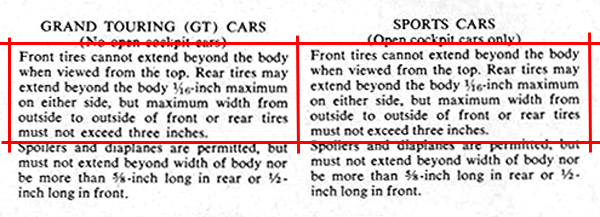
I choose door number one (2-7/8" over the outsides of the rear tires and no fender flares). Why? Because that is what makes me happy.
Moving right along, I need to pick parts. In particular, wheels. This is a Ferrari, so I need wire wheels, right?
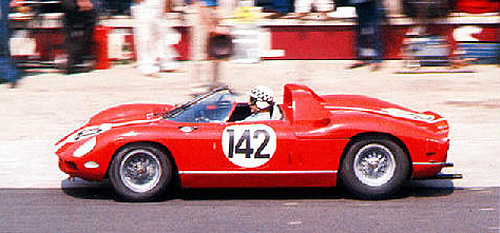
Maybe. Otherwise, it's the signature Ferrari five spoke wheels:

I think it's a bit early for that. Any other candidates? Check this:
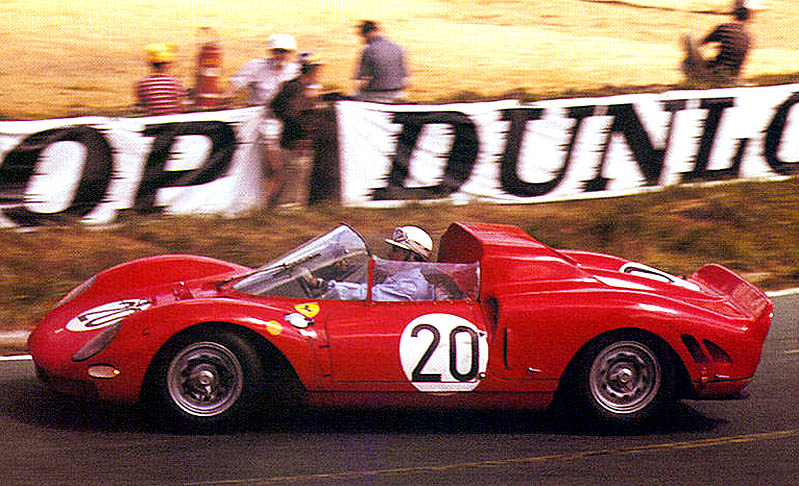
Ten hole wheels,... with knock-offs! I can do that!
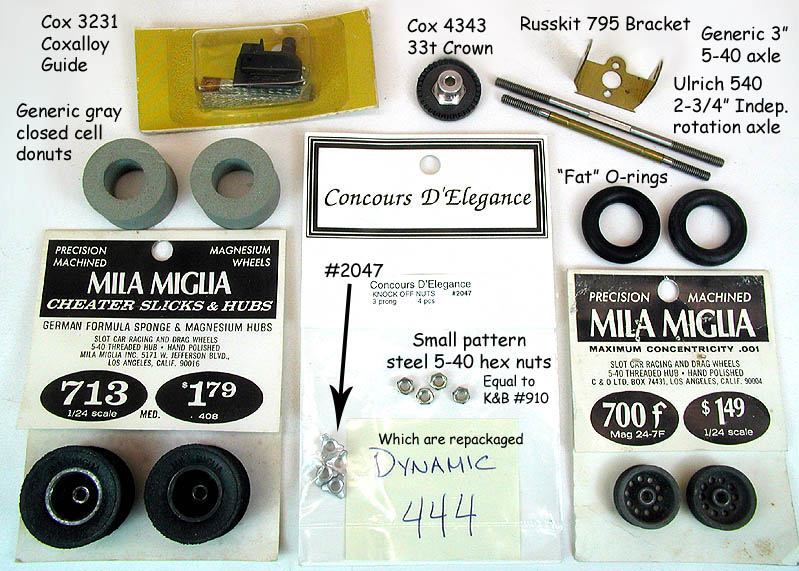
But wait! There's another problem. The R&C rules say:

Time for another interpretation. I would bet lunch the O-Rings that particular rule addresses are the 1/16" cross section variety, and I agree completely; 1/16" wide (1-1/2" scale) tires on a road race car are just too narrow. There are many bicycles with tires wider than that!
The "Fat" O-Rings I have selected to use as front tires are .210" (more than 3/16") cross section, which would be a solid five scale inches wide. Once again, I'm in the ballpark.
So now I've got my critical dimensions sorted, I can set up the jig. What's this? The jig doesn't do 3-13/16" wheelbases? Nope; only 1/8" increments. Time for some fudge.
I have some thick-wall brass tubing (I'm sure it's K&S - are you really going to make me look up the part number?  ) Cutting four short pieces each of 3/16" x 1/8" and 1/4" x 3/16", and slipping them over the spaced out 1/8" pins, I can "fake" a 3-13/16" wheel base:
) Cutting four short pieces each of 3/16" x 1/8" and 1/4" x 3/16", and slipping them over the spaced out 1/8" pins, I can "fake" a 3-13/16" wheel base:
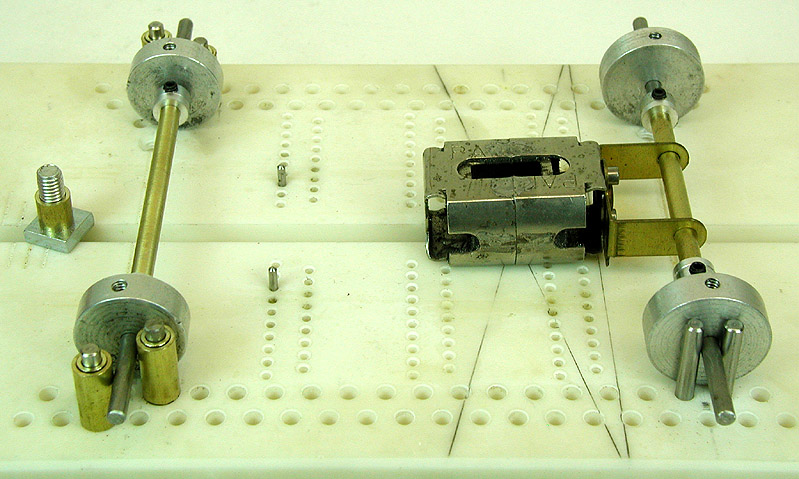
The jig wheels are standard 3/4" and 13/16" pieces, and the guide post height is about .125"
Now I'm (finally) ready to build the chassis.
![]()













